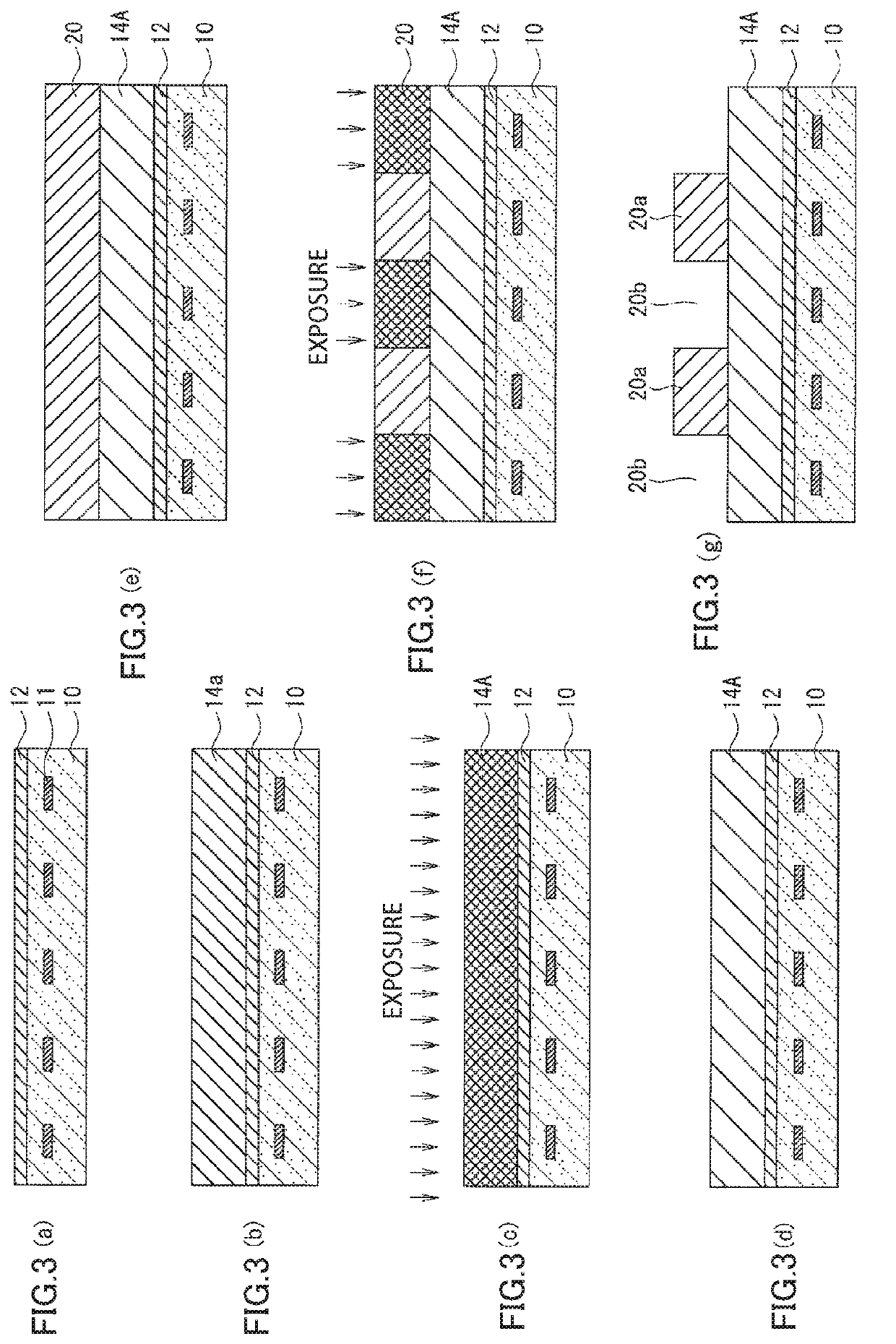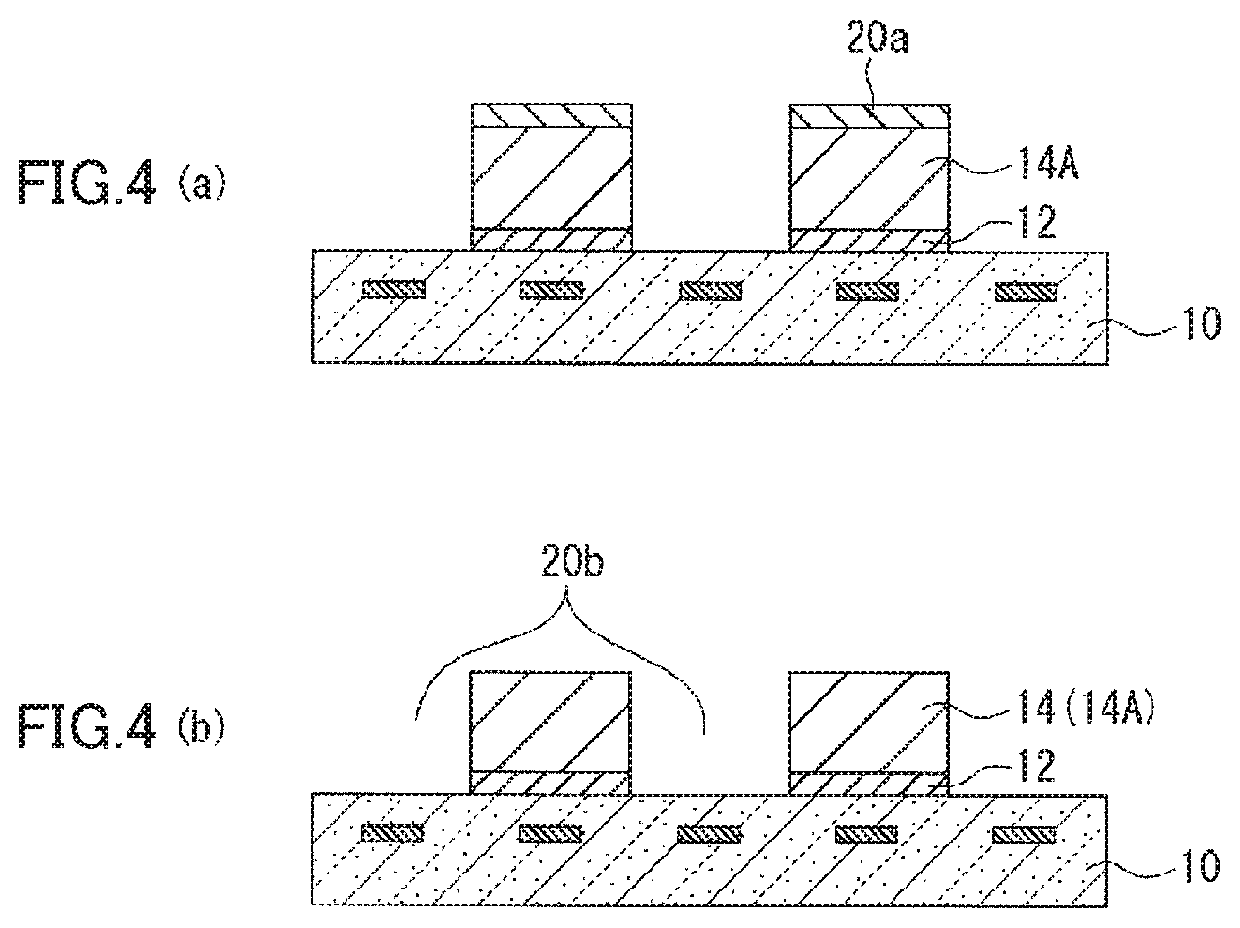Solid-state image sensor and method of manufacturing the same
a solid-state image sensor and image sensor technology, applied in the field can solve the problems of insufficient resolution performance, adversely affecting the characteristics of solid-state image sensors, and insufficient resolution performan
- Summary
- Abstract
- Description
- Claims
- Application Information
AI Technical Summary
Benefits of technology
Problems solved by technology
Method used
Image
Examples
second embodiment
[0160]A solid-state image sensor and a method of manufacturing the solid-state image sensor according to a second embodiment of the present invention will be described below with reference to FIGS. 10(a)-10(d). The solid-state image sensor according to the second embodiment of the present invention has a structure similar to that of the first embodiment.
[0161]The second embodiment differs from the first embodiment in a step during curing of the first-color color filter. Thus, a step of curing the first-color color filter will be described.
[0162]The solid-state image sensor according to the present embodiment is characterized in that the first-color color filter material contains no photosensitive resin material and is composed of only a thermosetting resin. Since the first-color color filter material contains only the thermosetting resin, the solid-state image sensor according to the present embodiment has an advantage that the pigment concentration can be increased and thus the fir...
third embodiment
[0171]A solid-state image sensor and a method of manufacturing the solid-state image sensor according to a third embodiment of the present invention will be described below with reference to FIGS. 11(a)-11(d).
[0172]The solid-state image sensor according to the present embodiment is characterized in that the first-color color filter material contains only a photosensitive resin as a curable component. The configuration containing a photosensitive resin material is similar to that of the color filter forming step by photolithography using a photosensitive color resist of a conventional method. In the present embodiment, however, the photosensitive resin is used, but conventional patterning is not performed. Instead, photocuring by entire surface exposure is performed, followed by heat curing to evaporate water from the color filter by high temperature heating. Accordingly, as compared with the conventional method, the present embodiment can reduce the amount of photosensitive curable ...
fourth embodiment
Modified Examples of Fourth Embodiment
[0227](1) In the method of manufacturing the solid-state image sensor according to the fourth embodiment, the solid-state image sensor may be manufactured by employing a step of curing the first-color color filter similar to that of the second embodiment (see FIGS. 10(a)-10(d)). Effects and the like are similar to those of the third embodiment.
[0228](2) In the method of manufacturing the solid-state image sensor according to the fourth embodiment, the method of manufacturing the solid-state image sensor according to the third embodiment (see FIGS. 11 and 12) may be employed.
[0229]The solid-state image sensor is characterized in that the first-color color filter material contains only a photosensitive resin as a curable component. The configuration containing a photosensitive resin material is similar to that of the color filter forming step by photolithography using a photosensitive color resist of a conventional method. In the present embodimen...
PUM
| Property | Measurement | Unit |
|---|---|---|
| temperature | aaaaa | aaaaa |
| pixel size | aaaaa | aaaaa |
| pixel size | aaaaa | aaaaa |
Abstract
Description
Claims
Application Information
 Login to View More
Login to View More - R&D
- Intellectual Property
- Life Sciences
- Materials
- Tech Scout
- Unparalleled Data Quality
- Higher Quality Content
- 60% Fewer Hallucinations
Browse by: Latest US Patents, China's latest patents, Technical Efficacy Thesaurus, Application Domain, Technology Topic, Popular Technical Reports.
© 2025 PatSnap. All rights reserved.Legal|Privacy policy|Modern Slavery Act Transparency Statement|Sitemap|About US| Contact US: help@patsnap.com



